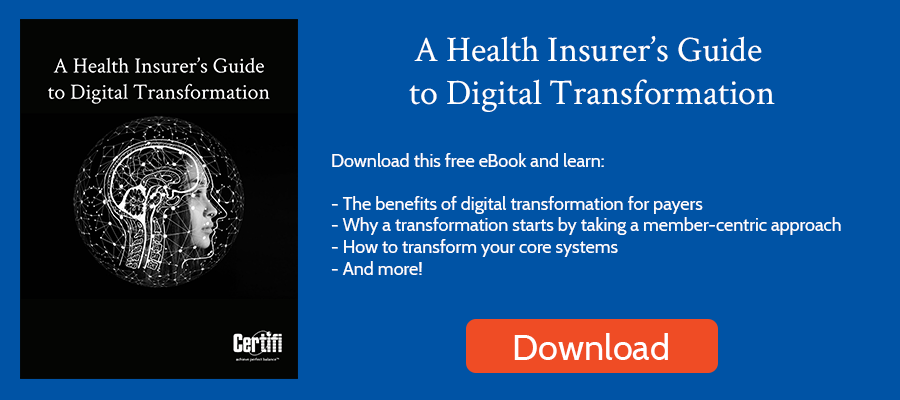It’s been more than five months since the Trump administration’s Centers for Medicare and Medicaid Services (CMS) issued a final rule on price transparency for payers. Called the Transparency in Coverage rule, it’s designed to help patients know how much their healthcare will cost in advance of treatment. Plus, the rule makes public previously private information about negotiated rates, out-of-network allowed amounts, and drug pricing information.
Read on to learn more about the price transparency rule for payers, what to expect from the transition to the Biden administration, and what insurers should consider so they can comply.
What the Transparency Rule Requires of Payers
The Transparency in Coverage rule creates several requirements for payers and providers. Payer requirements include:
- Disclosing cost-sharing information upon request, including an estimate of cost-sharing for covered items or services from a specific provider. That information must be available via the plan’s website or in paper form. The requirement enables consumers to get estimates for services so they can price shop.
- Plans must also make available in-network provider negotiated rates, out-of-network allowed amounts, and drug pricing information through three machine-readable files posted on a website.
Additionally, insurers can receive credit in their medical loss ratio (MLR) calculations for savings they share with enrollees after enrollees receive care from lower-cost, higher-value providers.
Deadlines
CMS staggered the deadlines for the transparency requirements shown above. The online shopping tools that enable members to see the negotiated rates between plans and providers must be implemented by January 1, 2023. Those shopping tools must reflect the prices for 500 of the most shoppable items as defined by the CMS final rule. On January 1, 2024, the remaining procedures, drugs, medical equipment, and other services must be online.
The machine-readable files must be publicly available by January 1, 2022.
Will the Transparency in Coverage Rule Go Live?
The Trump administration finalized the transparency rule late in their term. That has led to some speculation that the Biden administration may rescind or modify the rule. So far, the Biden administration doesn’t appear to be taking any action. In fact, when new Health and Human Services head Xavier Becerra was confirmed, he seemed to indicate he would enforce price transparency rules. Congress could also legislate around the rule, though that seems unlikely.
Payer Actions to Take
Whether the Biden administration or Congress will take action is debatable. But what isn’t debatable is that they haven’t already taken action. As a result, insurers need to start planning today for all deadlines.
Get Ready
Some insurers likely already have public websites with cost-sharing information available. But few have processes and data defined for tracking and sharing negotiated rates and out-of-network charges. The first step is to ensure you can extract your data to meet machine-readable file requirements. Information about the negotiated rate file can be found here while the allowed amounts file is found here. Note that these files need to be released monthly. So document your process for updating and releasing the required files as well.
It’s also important to develop a compliance plan to address the rule. Generally speaking, errors of omission or a temporarily unavailable website are not grounds for penalties if you’ve made an effort to comply with the regulations. So make sure your compliance plan includes policies and procedures detailing how you’ll provide the required information to consumers as well as how you’ll capture information from providers.
Also, create a plan to leverage the data that’s being released internally. Whether that’s creating internal tools that make analyzing a product’s competitiveness easier or monitoring competitor’s files for changes, there’ll be a wealth of information available that smart insurers are developing plans to leverage.
Complete a Competitive Analysis
Complying with the regulations can be onerous. But there is one silver lining in the rule: You’ll have access to a significant amount of competitive information that may help you better compete. Once the data is released, take some time to review it. Are your negotiated rates higher than the market? Lower than the market? Leverage that data to make strategic decisions.
Also, see how your competitors release their cost-sharing information. Consumers will be making decisions based on the information presented. So, it’s important to present it in as consumer-friendly a format as possible.
Bring New Data to Provider Negotiations
Finally, leverage the data to improve your position in provider negotiations. For example, you may find you have some high-cost providers. Leverage that data to drive down your costs. Or, you may find that there are low-cost providers that you can leverage to expand your plan networks. Reviewing the data and developing strategies to drive down costs or increase value to consumers should be a key component of your price transparency plans.
Certifi’s health insurance premium billing and payment solutions help healthcare payers improve member satisfaction while reducing administrative costs.



